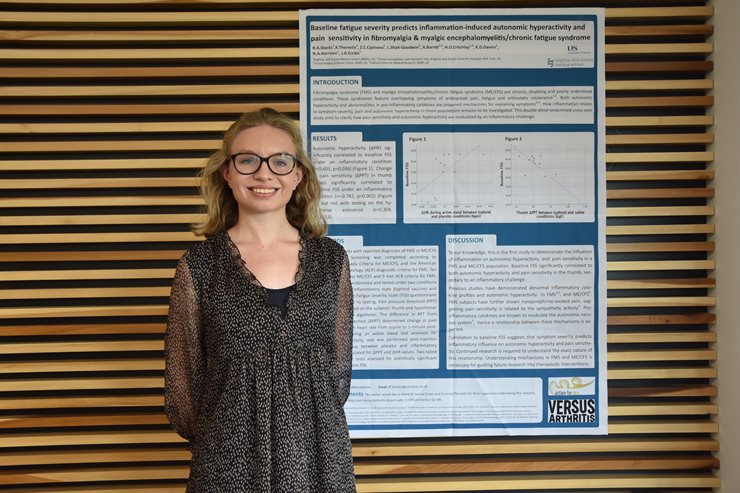Robyn Stocks

Baseline fatigue severity predicts inflammation-induced autonomic hyperactivity and pain sensitivity in fibromyalgia and myalgic encephalomyelitis/chronic fatigue syndrome
One factor that drew me to BSMS originally was the opportunity to complete an IRP during the fourth year of study. I became further interested in research while intercalating at the University of Leeds in Sports Science (BSc). Physiology, and how the psyche interacts with somatic functions, was an area I became particularly interested in. This led me to conduct a research project based on brain-body interactions in fibromyalgia and myalgic encephalomyelitis/chronic fatigue syndrome (ME/CFS), under the supervision of Dr Jessica Eccles and her team at the Trafford Centre.
My role in the project largely involved data entry and analysis. Fibromyalgia and ME/CFS are both poorly understood chronic pain conditions and are thought to have a common mechanism underpinning their pathophysiology. Some previously identified mechanisms include hyperactivity of the autonomic nervous system (ANS), increased sensitivity to pain and inflammatory disturbance.
Our research built on these findings by investigating whether pain sensitivity and ANS hyperactivity are modulated by an inflammatory challenge. Additionally, we looked at this in relation to baseline fatigue levels.
Most interestingly, we found that baseline fatigue levels predicted ANS hyperactivity induced by an inflammatory challenge in the combined fibromyalgia and ME/CFS group. This suggests an interaction between inflammation and the ANS in these chronic pain conditions. As this is ongoing research, this was a preliminary finding. Once data collection is complete the results will be reanalysed, and I look forward to exploring the final outcomes of the project. This is an important area of research, as understanding mechanisms will direct future research into therapies for these conditions.
Through my IRP I have had the opportunity to present my research internationally. I attended the American Psychosomatic Society's annual meeting this year in Vancouver, for which I was awarded a travel award for my abstract. I also received the Luke Fernandes award for best clinical rheumatology presentation at the IRP conference, as well as the Medico-Chirurgical Society Gold Award for overall IRP performance.
Overall, I have thoroughly enjoyed my IRP project and it has furthered my interest in pursuing an academic career!